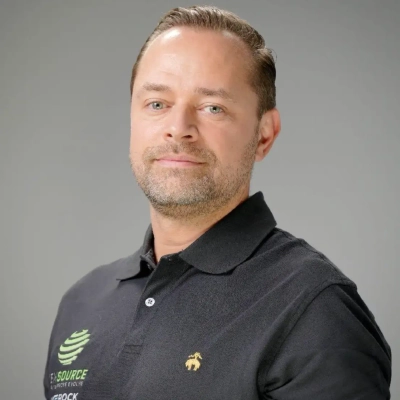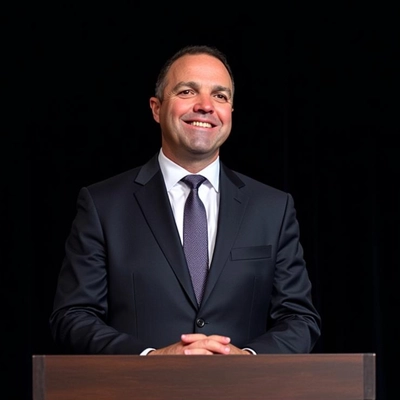17 Strategies for Balancing Organic and Paid Social Media Marketing
Social media marketing has become a crucial component of modern business strategies. This article explores effective ways to balance organic and paid social media efforts, drawing insights from industry experts. Discover how to optimize your social media approach and achieve better results for your brand.
- Test Organically Scale Paid Quarterly
- Align Content to Funnel Stages
- Inform and Entertain Through Organic Channels
- Boost Valuable Posts for Initial Traction
- Leverage Data and Intuition for Strategy
- Differentiate Lead Sources in Marketing Approach
- Use Paid as Spark Organic as Fuel
- Tailor Strategy to Target Consumer Demographics
- Evaluate Organic Reach Before Paid Investment
- Balance Trust Building and Timely Promotions
- Adjust Paid Organic Ratio by Industry
- Share Authentic Stories Amplify Key Moments
- Track Organic and Paid Metrics Separately
- Test Content with Small Paid Campaigns
- Optimize Mobile Landing Pages for Conversions
- Build Legacy Organically Drive Momentum Paid
- Create Credibility Layer with Organic Content
Test Organically Scale Paid Quarterly
This is a question I get from almost every CEO I coach—and I've tested the answer on the battlefield of my own business, Strategic Pete.
Here's how I approach it:
Organic = Proof of Life
Organic is where we test, educate, and build trust. We post 5-6 times a week on LinkedIn without spending a cent. That content proves we're real, consistent, and helpful. It also tells us what people actually care about. If a post flops organically, we don't scale it with money. If it hits? It becomes fuel.
Paid = Amplify What's Proven
We only boost what already worked organically. That's the golden rule. Our best ads? Former LinkedIn posts that performed well with zero spend. We also retarget warm audiences with bottom-of-funnel offers—things like webinars, books, or testimonial videos.
Strategy I Recommend:
1. Use organic to find the message.
2. Use paid to scale the message.
3. Repeat every quarter. Your audience and platform change fast—what worked in April might flop in August.
The biggest mistake I see? CEOs dumping thousands into ads without first testing their messaging with real humans. That's not marketing—that's lighting money on fire.
Let me know if you want the exact playbook I use with my clients.

Align Content to Funnel Stages
For our clients, we balance organic and paid social by aligning each to a specific stage in the funnel.
Paid campaigns handle early-stage exposure. They target cold or lookalike audiences who haven't interacted with us yet, and that's Phase A. These are broad awareness campaigns designed to get our brand in front of the right people. Then we move into Phase B, where organic content supports and builds on that initial exposure. We share behind-the-scenes content, FAQs, testimonials, and POV-driven posts that offer more context. The goal isn't to convert yet. It's to help people understand who we are, what we stand for, and why they should care. This is where tone and consistency start to matter. It also gives us a read on which topics or formats are holding attention before we push for action.
From there, we enter Phase C—paid retargeting for people who engaged but didn't convert. The message shifts to be more outcome-focused: limited-time offers, strong reasons to act, or social proof. Phase D is where organic stays active to hold attention and reinforce expertise. We keep the brand active through informative content, regular updates, and steady engagement, not needing to rely on nonstop ad spend. The goal is to let paid drive reach, and let organic carry the narrative forward.
My advice is to build your content calendar around the funnel phases. You have to map each post or ad to Phase A, B, C, or D. That keeps messaging aligned with intent and helps avoid content overlap or gaps.

Inform and Entertain Through Organic Channels
The approaches I take to paid versus organic social media marketing are vastly different. The realm of organic social media has become incredibly crowded with creators and businesses all vying for attention, and the advent of AI-generated content has exponentially increased the amount of noise that we, as businesses, need to cut through to be noticed.
I view organic social media as an opportunity to do one of two things: inform or entertain. The strategy I use for my own business leans more heavily towards informative, value-based content rather than entertainment. This type of content is all about educating the viewer without asking for much in return. You're not producing content that asks for sales; instead, you're creating content that gives the viewer something useful they can implement. An example of this type of content for my business would be providing helpful information on how a company could use a cell phone to film their own social media content. By providing value and sharing some tricks of the trade, you're establishing yourself as a legitimate authority and industry expert, which is exactly how we use this type of content for ourselves and for many of our clients.
Paid social media is different in most cases. Nobody is choosing to seek out your ads; your ads simply appear in front of them. You have a limited window to make your value known, and the message needs to be very clear. For us, we're either directly stating what we do and asking the viewer to click through, or we're using a client testimonial for social proof and a softer call to action. This is a much more direct approach to communicating information, but it's less about building a relationship and more about creating a sale.
Both paid and organic social media marketing are important. They can complement each other while also achieving success on their own. Paid social can be quantified with return on ad spend, whereas organic social is more difficult to quantify in terms of return. To simplify, I think of organic social as a brand-building activity. You put a lot of effort into cultivating an audience and building relationships around your brand, which can turn into organic conversions but can also supplement inorganic conversions by building trust with your leads. Paid social can have a much shorter effective time horizon and, in most cases, is less about building a brand and more about generating leads.
Boost Valuable Posts for Initial Traction
If you don't have a significant budget to drive leads through social media, use this framework to get started:
Focus 80% of your organic social posts on non-CTA, highly valuable content (enjoyable, helpful, interesting, etc.). Ask yourself the question, "Would a large percentage of my target audience potentially like or share this, even if they haven't seen my brand before?"
On Facebook, concentrate on making the hook (the first sentence of your copy) clear and valuable. Don't assume users will click "read more" to get the benefit from the post. Ask yourself, "Would someone read the hook and look at the photo, and then like or share?"
For Instagram, keep your content personal and authentic. Include lots of reels that would interest your target market.
Spend $5-10 a day (or whatever you can afford) on each platform to boost your content for 4 days. Post 2-3 times a week.
As your brand grows and you start to gain traction, use the other 20% of organic posts to introduce soft CTAs that are still valuable but focused on converting your following to paid customers.
If you have additional budget, use retargeting ads with a clearer CTA (still valuable) for people who have already seen your brand and have liked or commented on your content. This way, it's not a pure cold ad to someone who has never seen your company before.

Leverage Data and Intuition for Strategy
First, you need data. Leverage listening software to learn what the numbers say about what you and your competitors are doing on the organic side. Second, you need intuition. Translate the data into creative output through the lens of your brand. (And, as a bonus, check out your competitors' ads in the platforms' transparency centers! They've likely done a lot of testing as well, so you can save time and money by learning from their efforts.)
This one-two punch of data and intuition will guide you on how to balance your organic and paid approach. From there, treat everything as a test—and test the same content organically as you do with paid advertising. They should always complement each other to tell a holistic brand story and drive clear action.
The same users who see your organic content will probably see your paid content as well, so don't overdo it by telling too many stories or asking too much at once. For brands with smaller budgets, I suggest creating "ads" as organic posts and boosting them—an advertisement microdose, so to speak—and then selecting the best-performing boosts to expand on in full-fledged ads.

Differentiate Lead Sources in Marketing Approach
Our Texas roofing company has adopted the view that organic and paid social media support completely different lead sources in our business. Organic supports leads driven by the personal networks of our sales team, while paid social media drives leads with purchase intent.
We invest a significant amount of time filming videos and taking photos of our sales team members on their job sites. We aim to make them look like "roofing influencers" in their networks. We post the content on social media and instruct the sales team to share that content with their spheres of influence. We've seen tremendous success. One recent video, where a project manager replaced two roofs side-by-side simultaneously, earned him three roof replacement jobs from friends and family. The goal is to make our team members appear as successful and professional as possible, so that they're the top-of-mind roofers with their friends and family.
Paid ads are handled completely differently. We use product-focused content, such as photos and drone videos of projects, to reach customers who don't know us yet. We want to stop their scrolling and visually engage potential customers in need. These are ideally the straight-to-transaction type of leads. We've found equal levels of success here. At the time of writing, we've won $500,000 in revenue so far this year using this tactic, with only $37,000 in ad spend.

Use Paid as Spark Organic as Fuel
When it comes to balancing organic and paid social media, I treat paid campaigns as the spark and organic as the fuel. Paid social gives you quick visibility, but if you stop there, you're essentially "renting" attention. Organic reach, much like high-quality backlinks, compounds over time and keeps delivering traffic without ongoing spend. In one health niche case study, we saw a 226% organic traffic increase in just six months after building targeted, authoritative links—results that far outlast any paid ad spend. That's the kind of ROI you can't buy in perpetuity.
My approach is to use paid ads tactically: launching new content, testing audience responses, or capitalizing on timely trends. Then funnel that engagement into channels that build authority and SEO equity. For example, an outdoor travel site we worked with grew its organic reach by over 180% after we amplified their most linkable content with small, targeted paid pushes. This hybrid method aligns with research from the U.S. Small Business Administration showing that 70% of consumers value organic brand interactions over ads. In other words, let paid be your short-term accelerant, but invest heavily in what will still be driving clicks a year from now.
Tailor Strategy to Target Consumer Demographics
The first question to ask: What is your strategy? From a business and brand perspective.
Depending on your target consumer, internal skillset (can you create great content), and brand, you'll need to take a different approach for each channel.
Got a young consumer on TikTok? Native content will be needed, either created by you or affiliates. Once you have traction, push harder.
Got an older consumer? Meta is very much a paid game; organic reach is dead. You'll need to assume higher media investment.

Evaluate Organic Reach Before Paid Investment
One thing I've learned as a small business owner is that it's wise not to pour too much into paid social media advertising until you've taken the time to fully understand your organic reach. At Bemana, we initially assumed paid ads would need to be a major part of our strategy. We allocated a chunk of our budget to sponsored posts and targeted campaigns, believing our industry -- recruiting, particularly in the industrial sector -- wouldn't naturally generate much organic engagement. But we were wrong.
What we hadn't accounted for was just how many potential candidates and clients were already active on social media, and more importantly, how much they were engaging with authentic, helpful content. Our posts on job market trends, behind-the-scenes recruiting insights, and day-in-the-life stories from placed candidates started gaining traction without any ad spend. Even more surprising was how many niche influencers -- people who had built followings by sharing their own job search journeys or trade-specific advice -- began resharing our content and tagging us in their conversations.
In hindsight, I wish we'd taken the time to evaluate our organic performance before making early ad investments. We would have saved money and, more importantly, developed a strategy that better fit our audience. My advice to other business owners: don't assume your sector isn't a fit for organic social. Start by posting consistent, valuable content and see how your audience responds. Only then should you decide how to balance paid and organic efforts. In many cases, your organic reach might be stronger and more cost-effective than you expect.

Balance Trust Building and Timely Promotions
Since we market funeral homes, we use organic and paid social media for very different but complementary goals. Organic content helps build trust over time: sharing grief resources, staff highlights, and community events that show the human side of the business. Paid campaigns are focused and time-sensitive, like promoting pre-need services or driving calls during key moments.
The balance comes from knowing the intent behind each channel. Organic builds relationships. Paid helps people find you when they need you most. Both matter, especially in a trust-driven industry like ours.

Adjust Paid Organic Ratio by Industry
When deciding how much to invest in paid social media marketing versus relying on organic reach, it's crucial to consider your industry's reputation and how your audience perceives promotional content. In sectors like fashion or consumer tech, for instance, frequent paid ads are not only expected, they're often part of the brand's identity. High-volume paid media in those spaces doesn't carry a negative connotation; it's just part of the game.
However, in other fields -- like recruiting, where I work -- it's a very different story. Overuse of paid advertising can actually harm your reputation. It can come across as desperate, impersonal, or even predatory. And that's the last impression we want to make in an industry already battling outdated stereotypes tied to words like "headhunting."
At Tall Trees Talent, we've found that a 30% paid / 70% organic split works best for us. This allows us to remain present and visible while ensuring that most of our reach is still built on trust, relationships, and authentic content.
That said, every industry is different. My advice? Take your time. Study how your competitors are perceived, consider the tone and culture of your sector, and think carefully about the message your marketing approach sends.

Share Authentic Stories Amplify Key Moments
Balancing organic and paid social media comes down to knowing your audience and your goals. I ensure we regularly share authentic stories--like a recent first-time seller who trusted us through a tough transition--to organically demonstrate our dedication to the community. We use paid ads when we have a specific call-to-action or event, such as promoting a new listing or an educational seminar. My biggest advice is to make your organic content reflect your real values, and use paid advertising to amplify your impact at the right moments. Don't forget to actively engage with people who comment, whether they found you through an ad or through your daily updates.
Track Organic and Paid Metrics Separately
You may have what you believe are the best plans for using organic versus paid social media, but without a way to measure them, you'll be throwing darts in the dark. This is why you should track their performance differently. Your assessment of your ROI is only as good as the data you feed into your metrics, so simply using a uniform method to track two very different approaches is not a good idea.
Therefore, for organic metrics, you should look at engagement rates, follower increase, and reach & shares; while your paid metrics need to be divided into cost per click, click-through rate, and conversions. By taking this approach, you can get a more accurate account of what works and what doesn't. By separating your assessment of organic and paid social media, you can gain a clearer picture of what is happening and make better decisions that will benefit your business.
Test Content with Small Paid Campaigns
We use paid content to figure out what works and then make it organic. We do not spend a lot of time drafting long articles or creating a week's worth of content before testing it. Instead, we conduct ad tests of short versions with a budget of $20. The advertisements that gather comments or saves typically indicate something worth elaborating on.
In this way, we are not guessing. We do organic planning at scale through only small paid tests. This approach is time-saving, and burnout is avoided since the concepts we are promoting have evidence of public interest. It is a rhythm that keeps our channels active without having to constantly generate new content.

Optimize Mobile Landing Pages for Conversions
One small change that made a big difference was fixing our slow mobile landing pages. We noticed that a lot of mobile users were bouncing before even seeing the call-to-action. Digging into our analytics and real-user monitoring tools, it became clear that the main issue was slow load times, especially on key product pages.
We cleaned up oversized images, switched to WebP, and trimmed back unnecessary code and third-party scripts. Once we got our mobile load time down by nearly 2 seconds, everything improved: lower bounce rate, more time on page, and most importantly, more conversions. It was a good reminder: user experience on mobile isn't only a UX thing, but a revenue thing.

Build Legacy Organically Drive Momentum Paid
Hello,
We treat organic and paid social as two different tools for two different jobs. Organic builds our legacy, showing the craftsmanship, history, and soul behind our reclaimed stone. Paid, on the other hand, drives momentum. But we don't boost posts; we build funnels.
Our best-performing paid campaigns lead directly into one-on-one design consultations, not product pages. It works because high-end clients don't impulse-buy six-figure stone orders; they respond to vision.
We identified this balance by tracking not just engagement, but qualified lead volume and client lifetime value. The vanity metrics meant nothing; the right story told to the right architect at the right moment? That's where the revenue lives.
Best regards,
Erwin Gutenkust
CEO, Neolithic Materials
https://neolithicmaterials.com/

Create Credibility Layer with Organic Content
Our organic content is our credibility layer, and our paid content is our precision layer. Our certification, safe processes, and environmental commitments are part of the organic content that makes us visible to our clients, and we keep in touch with them through visibility by being part of their world. We do not think that content will do the difficult work by itself.
In the case of paid content, we conduct explicit campaigns which are focused on IT managers, compliance officers, and sustainability leads in major sectors. The message is straightforward, but the follow-through directs them to confirmed items of content that we have already created.
Likes are not our concern. Both channels are treated as our audit trail; everything can be traced, is intentional, and related to business trust.






